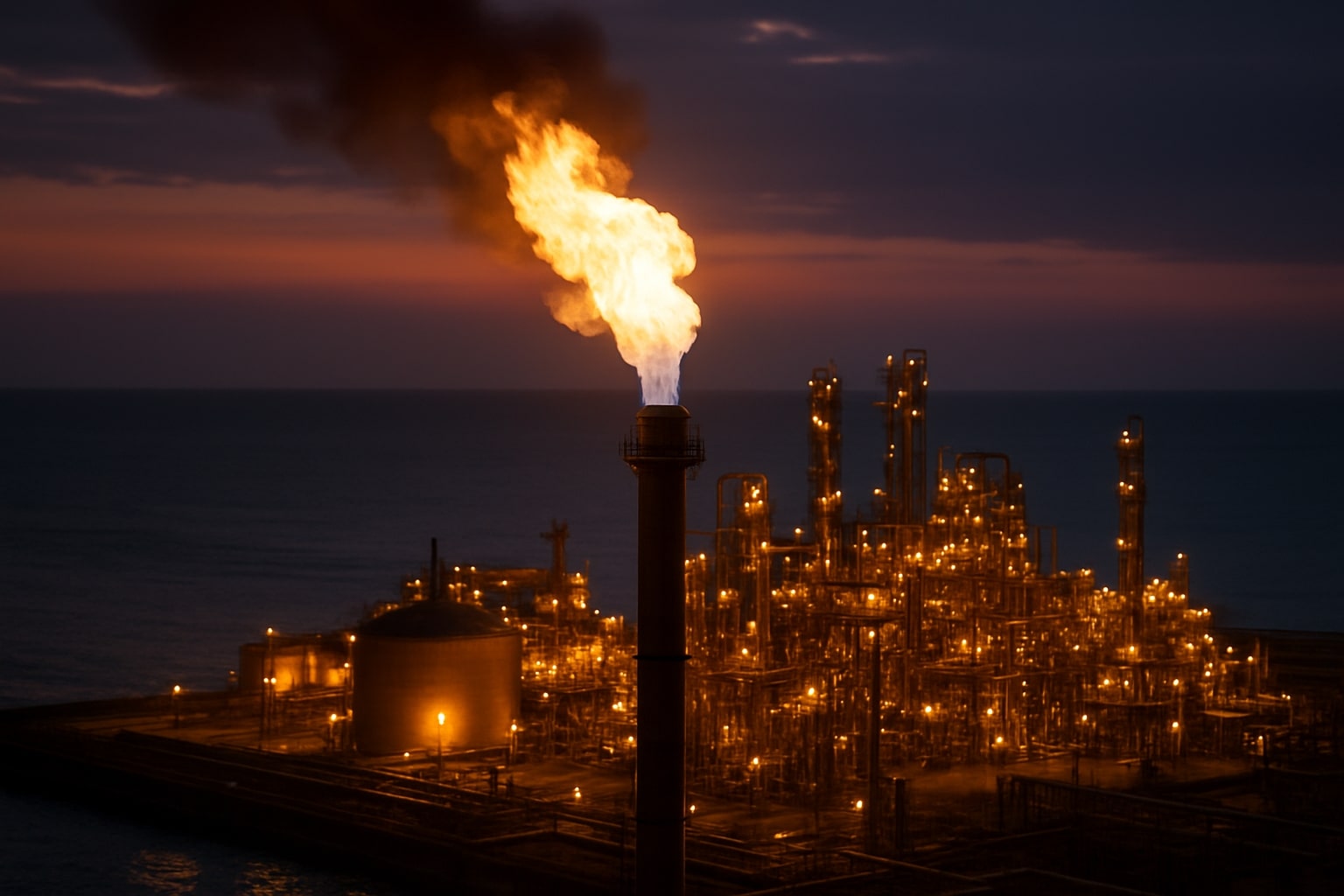
Natural Gas Price (NG=F) Slides to $2.70 as Supply Glut and Mild Weather Pressure Futures
U.S. production at 108.4 Bcf/day and cooler forecasts weigh on natural gas, while Europe’s TTF rises to €33.45 amid tight storage and Norway maintenance | That's TradingNEWS
Natural Gas (NG=F) Price Outlook as Cooling Weather and Rising Output Pressure Futures
U.S. Natural Gas Futures Face Persistent Weakness
U.S. natural gas futures have extended their losing streak to five consecutive weeks, closing at $2.698 per mmBtu on Nymex, the lowest settlement since November of last year. The decline reflects shifting weather patterns that continue to weigh on demand as the market transitions into the low-consumption shoulder season. Forecasts from Aug. 26 to Sept. 3 show cooler-than-normal weather across much of the United States, with temperatures in the comfortable 60s–80s Fahrenheit range, limiting air-conditioning-driven consumption. Traders are already pricing in September trends that suggest above-normal warmth in parts of the country, but far from the heat levels required to trigger a meaningful reversal in demand.
Storage Builds and Production Growth Complicate Price Recovery
The latest EIA storage report showed a modest injection of 13 billion cubic feet (Bcf), coming in well below the five-year average build of 35 Bcf. Inventories now stand 5.8% above their five-year average, but still about 3% lower year-on-year, signaling that while supplies are comfortable, they are not excessive. Despite the smaller-than-expected build, near-record U.S. production levels continue to serve as a ceiling for prices. U.S. dry gas production is averaging 108.4 Bcf/day, up 6.3% year-on-year, with active rigs holding near a two-year high at 122. LNG exports remain robust at 15.7 Bcf/day, but not sufficient to offset domestic oversupply. Demand across the lower-48 states was measured at 77.9 Bcf/day, up nearly 10% from last year, yet still inadequate to absorb the relentless production growth.
European Natural Gas Adds Geopolitical Risk Premium
In Europe, the benchmark Dutch TTF contract rose to €33.45 per MWh, gaining 0.8% on the day and 4.1% on the week, largely on concerns about Norwegian supply disruptions due to planned maintenance and fading hopes for a Russia-Ukraine cease-fire. EU gas storage sits at 74% full, significantly below last year’s 91% and trailing the five-year average of 82%, suggesting that Europe could face tighter balances as winter approaches. This divergence between U.S. and European gas highlights the global disconnect: while American supply surpluses depress Henry Hub-linked prices, Europe remains exposed to geopolitical shocks and supply-side vulnerabilities.
Corporate Impact: Northern Oil and Gas and Range Resources Adjust to Volatility
On the corporate front, Northern Oil and Gas (NYSE:NOG) posted stronger-than-expected second-quarter results, citing robust natural gas output alongside lower capital spending. Management reiterated full-year guidance, emphasizing free cash flow stability despite commodity volatility. Analysts see upside in NOG’s dividend growth strategy, with the most recent payout lifted to $0.45 per share, a 7% year-over-year increase. Meanwhile, Range Resources (NYSE:RRC) has adjusted its 2025 guidance upward, projecting 2.225 Bcfe/day in production while trimming cost expectations. Despite operational strength, RRC’s free cash flow is expected to plunge in the second half of 2025 to about $146 million, down sharply from nearly $400 million in the first half, primarily due to weaker realized natural gas prices, which averaged $3.49 per Mcfe after hedging. The company has hedged around 40% of its output at $4.07, softening the blow from spot weakness, while benefiting from U.S. tax law changes that are expected to reduce cash tax payments until 2028.
Electric Power Demand Offers Temporary Relief
The Edison Electric Institute reported that electricity output in the U.S. rose 7.1% year-over-year during the week ending August 16, with cumulative output up 2.7% year-over-year over the past 52 weeks. This surge in power generation has provided temporary support for natural gas demand in the utility sector, with gas-fired plants covering seasonal electricity needs. However, as temperatures ease heading into September, the power burn is expected to moderate, pulling demand lower and keeping prices under pressure.
Trading Levels and Technical Setup
From a technical standpoint, natural gas futures remain in a bearish structure. The September contract (NGU25) fell 4.53% on August 22, touching a nine-and-a-half-month low. Support has formed near $2.60, while resistance sits around $2.80–$2.85, levels that have capped upside attempts in recent sessions. Without a weather-driven catalyst or a significant production slowdown, the market risks drifting lower toward $2.50. Conversely, a sustained break above $2.85 could invite short covering and repositioning ahead of the winter strip, where optimism remains for stronger LNG pull and potential cold-weather demand.
Buy, Sell, or Hold?
With NG=F futures at $2.70, the short-term setup remains bearish. Strong supply growth, high rig counts, and cooler-than-expected late summer weather are pressuring prices. On the other hand, winter contracts are pricing in more constructive fundamentals, with LNG exports likely to tighten balances if geopolitical tensions persist in Europe and if U.S. demand for heating rises sharply. For now, natural gas is a Hold, with downside risk in the near term but latent upside if winter arrives colder than forecast and ETF-driven speculative flows reenter the space.
That's TradingNEWS
Read More
-
PFFA ETF Nears $21.50 as Rate Cuts and 9.49% Yield Spark Renewed Demand
29.11.2025 · TradingNEWS ArchiveStocks
-
XRPI and XRPR ETFs Ignite Ripple’s Institutional Rally as Inflows Near $1B and XRP Holds $2.20
29.11.2025 · TradingNEWS ArchiveCrypto
-
Natural Gas Price Forecast - NG=F Blasts to $4.85 as Demand Surge Fuel Multi-Month Breakout
29.11.2025 · TradingNEWS ArchiveCommodities
-
USD/JPY Price Forecast - Yen to Dollar Slides to 156.10 as Yen Strengthens on Fed Cut Expectations
29.11.2025 · TradingNEWS ArchiveForex



















